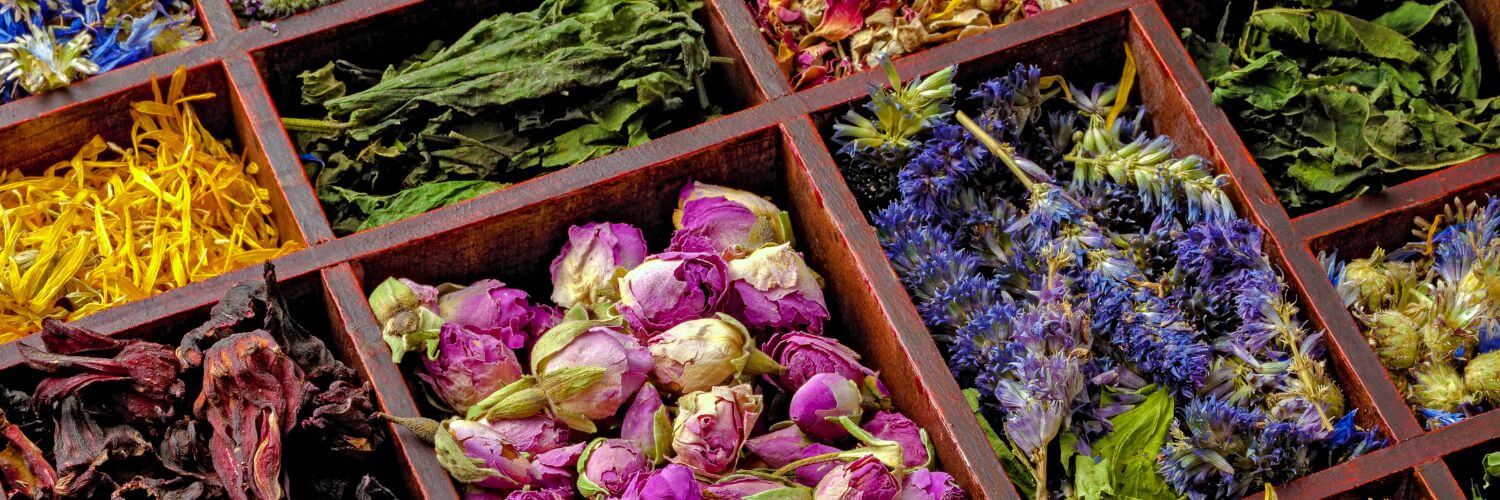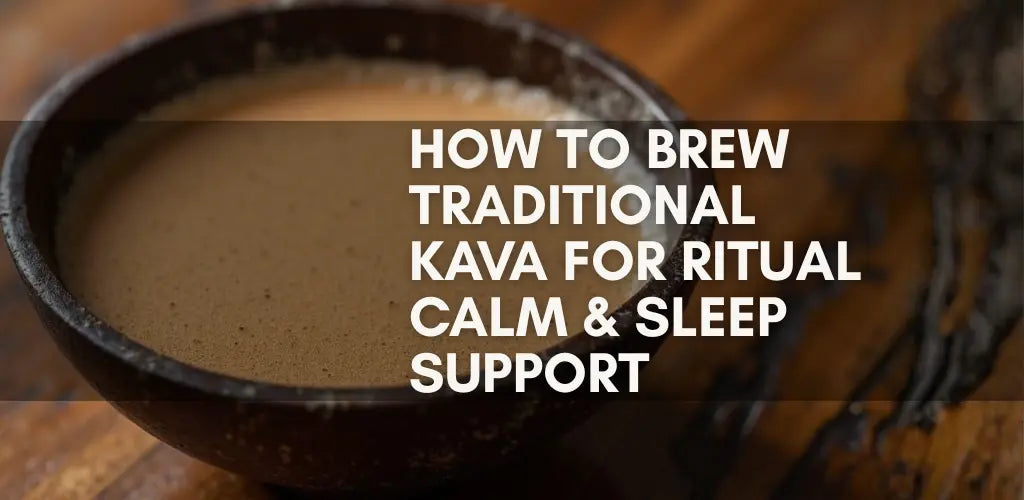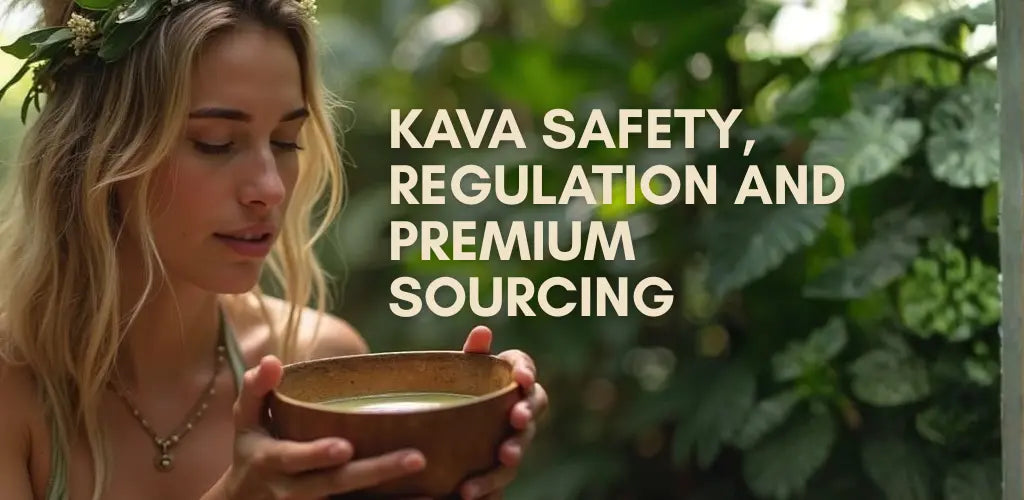Creating Your Own Herbal Teas
Introduction to Creating Herbal Teas at Home
Herbal teas have been cherished for centuries across various cultures for their soothing properties and health benefits. Whether you're looking to relax after a long day or seeking natural remedies for common ailments, herbal teas offer a delightful and therapeutic experience.
Overview

In this guide, we will explore everything you need to know about creating your own herbal teas at home. From understanding the basics of herbal teas, selecting and blending herbs, to mastering the art of brewing, we've got you covered. By the end of this article, you'll have the knowledge and confidence to craft your personalized herbal tea blends that cater to your taste and health needs.
1. Understanding Herbal Tea
Definition and Benefits
Herbal tea, also known as a tisane, is a beverage made from the infusion or decoction of herbs, spices, fruits, and other plant materials in hot water. Unlike traditional teas (black, green, white), herbal teas do not contain tea leaves from the Camellia sinensis plant, which means they are naturally caffeine-free. This makes them an excellent choice for those seeking a soothing and caffeine-free beverage.
Health Benefits of Herbal Tea
Herbal teas are celebrated for their wide range of health benefits, which can vary depending on the herbs used. Some common benefits include:
- Digestive Health: Teas like peppermint and ginger are known to aid digestion and alleviate stomach discomfort.
- Relaxation and Sleep: Chamomile and lavender teas are popular for their calming effects, helping to promote relaxation and improve sleep quality.
- Immune Support: Herbs like echinacea and elderberry are often used in teas to boost the immune system and fend off colds and flu.
Popular Herbs for Tea
Choosing the right herbs is crucial for creating flavorful and beneficial herbal teas. Here are some popular herbs commonly used in herbal teas:
- Chamomile: Known for its calming effects, chamomile tea is perfect for relaxation and sleep support. Buy Chamomile
- Peppermint: With its refreshing flavor, peppermint tea aids digestion and soothes the stomach. Buy Peppermint
- Hibiscus: A tart and tangy herb, hibiscus tea is rich in antioxidants and supports cardiovascular health. Buy Hibiscus
- Ginger: Spicy and warming, ginger tea is excellent for digestion and boosting the immune system. Buy Ginger
- Lavender: This fragrant herb promotes relaxation and can help alleviate stress and anxiety. Buy Lavender
Essential Tools for Making Herbal Tea
Basic Equipment
To create the perfect cup of herbal tea, having the right tools is essential. Here are some basic pieces of equipment you'll need:
- Teapots: A quality teapot is essential for brewing herbal tea. Ceramic, glass, or cast iron teapots are popular choices as they retain heat well and are easy to clean.
- Infusers: Infusers are used to hold loose herbs while they steep in hot water. There are many types, including mesh balls, silicone infusers, and basket infusers.
- Kettles: A good kettle is necessary for heating water to the appropriate temperature. Electric kettles with temperature control can be particularly useful for ensuring the water is just right for different types of herbs.
Optional Accessories

While the basic tools will get you started, a few optional accessories can enhance your herbal tea-making experience:
- Thermometers: Ensuring your water is at the right temperature can make a significant difference in the taste of your tea. A thermometer can help you achieve the perfect brew.
- Tea Strainers: If you prefer to brew loose herbs directly in your teapot, a tea strainer will be useful for pouring your tea without the herbs getting into your cup.
- Storage Jars: Proper storage is crucial for maintaining the freshness and potency of your herbs. Glass jars with airtight seals are ideal for keeping your herbs dry and protected from light and moisture.
Recommendations
For the best results, investing in high-quality tools can enhance both the flavor and health benefits of your herbal teas. Here are a few recommendations:
- Ceramic Teapot: Retains heat well and is easy to clean.
- Stainless Steel Mesh Infuser: Durable and fine enough to prevent small herb particles from escaping.
- Electric Kettle with Temperature Control: Ensures you can heat water to the perfect temperature for different herbs.
- Glass Storage Jars with Airtight Lids: Keeps your herbs fresh and flavorful.
Having the right tools on hand can make the process of creating and enjoying your own herbal teas a delightful and satisfying experience.
Blending Herbal Teas at Home
Choosing Your Herbs
Creating your own herbal tea blends allows you to customize flavors and health benefits to suit your preferences and needs. Here are some tips for selecting the best herbs:
- Flavor Profiles: Consider the flavors you enjoy. Some herbs have strong, distinctive tastes, while others are more subtle. Mixing complementary flavors can create a well-balanced blend.
- Health Benefits: Choose herbs based on their health benefits. For example, chamomile is great for relaxation, while ginger aids digestion.
- Quality: Always use high-quality, organic herbs to ensure the best flavor and health benefits.
Blending Techniques
Blending herbal teas is both an art and a science. Here are some techniques to help you create delicious and effective blends:
- Balance of Flavors: Start with a base herb that will make up about 50-70% of your blend. Add secondary herbs to complement the base, and finish with small amounts of accent herbs for flavor or additional health benefits.
- Proportions: A typical blend might be 2 parts base herb, 1 part secondary herb, and 0.5 part accent herb. Adjust the proportions to taste.
- Experimentation: Don’t be afraid to experiment with different combinations. Keep notes on your blends to remember what works best.
Customization Tips
Here are some tips for customizing your herbal tea blends to suit your taste and health needs:
- Flavor Enhancers: Add ingredients like dried fruit, citrus peel, or spices (e.g., cinnamon, cardamom) to enhance the flavor.
- Health Focus: Tailor your blends to target specific health concerns. For example, blend peppermint and ginger for digestive health, or chamomile and lavender for relaxation.
- Sweeteners: If you prefer sweet tea, consider adding natural sweeteners like honey, stevia, or licorice root.
Example Blends
Here are a few example blends to get you started:
-
Relaxation Blend
- 2 parts chamomile
- 1 part lavender
- 0.5 part lemon balm
-
Digestive Aid Blend
- 2 parts peppermint
- 1 part ginger
- 0.5 part fennel (Fennel link not provided)
-
Immune Support Blend
- 2 parts echinacea
- 1 part elderberry
- 0.5 part rose hips
Remember, the joy of creating your own herbal tea blends lies in the ability to experiment and discover what combinations you enjoy the most. Keep adjusting and tasting until you find your perfect mix.
Brewing Herbal Teas
Brewing Basics
Brewing herbal tea is an art that requires the right technique to extract the best flavor and health benefits from your herbs. Here are some fundamental tips for brewing the perfect cup of herbal tea:
- Water Quality: Use filtered water for the best taste. Tap water can contain impurities that affect the flavor of your tea.
- Water Temperature: Unlike traditional teas, most herbal teas require boiling water (around 212°F or 100°C). However, some delicate herbs may need slightly cooler water to avoid bitterness.
- Steeping Time: Herbal teas generally need a longer steeping time than traditional teas. Steep your herbs for at least 5-10 minutes to ensure maximum flavor and benefits.
Step-by-Step Brewing Guide
Follow these steps to brew a delicious cup of herbal tea:
- Measure Your Herbs: Use about 1-2 teaspoons of dried herbs per cup of water. Adjust the amount based on your taste preference and the strength of the herbs.
- Boil the Water: Heat the water to a rolling boil. If you’re using a kettle with temperature control, set it to 212°F (100°C).
- Prepare the Infuser: Place the measured herbs into an infuser or directly into your teapot if you plan to strain the tea later.
- Add Water: Pour the boiling water over the herbs in the infuser or teapot.
- Steep the Tea: Cover and let the tea steep for 5-10 minutes. Some herbs may benefit from longer steeping times; adjust based on the specific herbs you’re using.
- Strain and Serve: If you brewed the tea directly in the teapot, strain the herbs before serving. Otherwise, remove the infuser. Pour the tea into your cup and enjoy.
Tips for Perfect Tea
To ensure you always brew the perfect cup of herbal tea, keep these tips in mind:
- Experiment with Steeping Times: Different herbs may require different steeping times to bring out their best flavors. Start with the recommended time and adjust to your taste.
- Use Fresh Herbs: Freshness is key to a flavorful and beneficial tea. Ensure your herbs are stored properly and used within their shelf life.
- Avoid Over-Steeping: While longer steeping can enhance flavor, over-steeping can sometimes lead to bitterness, especially with delicate herbs.
Enhancing Your Tea
To further enhance your tea, consider adding:
- Sweeteners: Honey, stevia, or agave syrup can add a touch of sweetness.
- Citrus: A slice of lemon or orange can brighten the flavor.
- Spices: Cinnamon, cardamom, or cloves can add warmth and complexity to your tea.
By following these guidelines and experimenting with different techniques, you'll be able to brew herbal teas that are not only delicious but also packed with health benefits.
Herbal Tea Recipes
Creating your own herbal tea blends can be both fun and rewarding. Here are some easy and advanced recipes to get you started:
Simple Recipes for Beginners
These easy-to-make blends require only a few ingredients and are perfect for beginners.
Calming Chamomile Tea
Refreshing Peppermint Tea
- 2 teaspoons peppermint
- 1 teaspoon lemon balm
- Steep for 5-10 minutes.
Advanced At Home Tea Recipes
For those who want to experiment with more complex flavors, these advanced recipes provide a richer and more nuanced tea experience.
Immune Boosting Blend
- 2 teaspoons echinacea
- 1 teaspoon elderberry
- 0.5 teaspoon rose hips
- Steep for 10-15 minutes.
Spiced Ginger Tea
- 2 teaspoons ginger
- 1 teaspoon cinnamon bark (Cinnamon link not provided)
- 0.5 teaspoon cloves (Cloves link not provided)
- Steep for 10-12 minutes.
Specialty Teas
These recipes target specific health benefits and are great for incorporating into your wellness routine.
Digestive Comfort Tea
- 2 teaspoons peppermint
- 1 teaspoon ginger
- 0.5 teaspoon fennel seeds (Fennel link not provided)
- Steep for 10-15 minutes.
Relaxation and Sleep Tea
- 2 teaspoons chamomile
- 1 teaspoon lavender
- 0.5 teaspoon lemon balm
- Steep for 5-7 minutes.
By experimenting with these recipes and adjusting them to your taste, you'll be able to create delicious and beneficial herbal teas tailored to your preferences and needs.
Storing and Preserving Herbal Teas
Proper storage of your herbal teas is essential to maintain their freshness, flavor, and potency. Here are some guidelines to ensure your herbs stay in optimal condition.
Storage Tips
Airtight Containers: Store your dried herbs in airtight containers to prevent exposure to air, which can degrade their quality. Glass jars with airtight seals are ideal.
Cool, Dark Place: Keep your herbs in a cool, dark place, away from direct sunlight and heat. Light and heat can cause the herbs to lose their flavor and medicinal properties.
Dry Environment: Ensure your storage area is dry. Moisture can lead to mold and spoilage. Consider adding a silica gel packet to your containers to absorb any excess moisture.
Labeling: Label your containers with the herb name and the date of storage. This will help you keep track of the freshness and ensure you use the oldest herbs first.
Shelf Life
The shelf life of dried herbs can vary, but generally, they remain potent for 6 months to a year if stored properly. Here are some general guidelines:
- Leafy Herbs (e.g., peppermint, chamomile): These herbs typically stay fresh for up to a year.
- Roots and Barks (e.g., ginger, cinnamon): These have a longer shelf life and can remain fresh for up to two years.
- Flowers (e.g., lavender, hibiscus): These are more delicate and should be used within 6 months to a year.
Tips for Maintaining Freshness
- Check Regularly: Periodically check your stored herbs for signs of spoilage, such as changes in color, smell, or the presence of mold.
- Small Batches: If possible, purchase or dry your herbs in small batches to ensure they are used while still fresh.
- Grinding as Needed: For maximum potency, store herbs in whole form and grind them just before use. This helps retain their essential oils and flavor.
Rejuvenating Stale Herbs
If your herbs have lost some of their potency but are still safe to use, you can rejuvenate them slightly:
- Heat Activation: Lightly toast the herbs in a dry pan for a few minutes to release their essential oils. Be careful not to burn them.
- Steam Refreshing: Place the herbs in a strainer over a pot of steaming water for a few seconds. This can help revive their aroma and flavor.
By following these storage and preservation tips, you can ensure your herbal teas remain fresh, flavorful, and effective for as long as possible.
Frequently Asked Questions (FAQs)
Creating and enjoying herbal teas can raise many questions. Here are some common questions and their answers to help you on your herbal tea journey.
Common Questions
What is the difference between herbal tea and traditional tea?
- Herbal teas, also known as tisanes, are made from a variety of plant materials, including herbs, spices, flowers, and fruits, while traditional teas (black, green, white) are made from the leaves of the Camellia sinensis plant. Herbal teas are naturally caffeine-free, unlike traditional teas.
How do I know which herbs to use for my tea?
- Choose herbs based on your flavor preferences and desired health benefits. For example, chamomile and lavender are great for relaxation, while peppermint and ginger aid digestion. Experiment with different combinations to find what you like best.
Can I use fresh herbs instead of dried herbs?
- Yes, you can use fresh herbs. However, you'll need to use more fresh herbs than dried, as dried herbs are more concentrated. Typically, use three times the amount of fresh herbs as dried.
How long should I steep herbal tea?
- Most herbal teas should be steeped for 5-10 minutes. Some roots and barks may require longer steeping times, up to 15-20 minutes. Adjust based on the specific herbs and your taste preference.
Can I blend different herbs together?
- Absolutely! Blending different herbs can create unique flavors and enhance health benefits. Just be sure to balance the flavors and consider the properties of each herb.
How should I store my herbal teas?
- Store dried herbs in airtight containers, in a cool, dark, and dry place. Proper storage ensures the herbs remain fresh and potent for as long as possible.
Are there any herbs I should avoid?
- While many herbs are safe, some can have strong effects or interact with medications. Always research or consult with a healthcare provider before using unfamiliar herbs, especially if you have health conditions or are pregnant.
What are some common herbal tea recipes for specific health benefits?
- For relaxation and sleep: Chamomile, lavender, and lemon balm.
- For digestion: Peppermint, ginger, and fennel.
- For immune support: Echinacea, elderberry, and rose hips.
Can I sweeten my herbal tea?
- Yes, you can sweeten your herbal tea with natural sweeteners like honey, stevia, or agave syrup. Adjust the amount to your taste.
What equipment do I need to make herbal tea?
- Basic equipment includes a teapot, infuser, and kettle. Optional accessories like thermometers and tea strainers can enhance your tea-making experience.
Additional Tips
- Experiment: Don’t be afraid to try new herbs and blends. Keep notes on what works best for you.
- Stay Informed: Read up on the properties and benefits of different herbs to make informed choices.
- Enjoy the Process: Making and drinking herbal tea is a relaxing and enjoyable ritual. Take the time to appreciate the flavors and aromas.
These FAQs should help you get started and feel confident in creating and enjoying your own herbal teas.
Summary of Key Points
Creating your own herbal teas at home is a rewarding and enjoyable process that allows you to customize flavors and health benefits to suit your preferences. Here’s a quick recap of what we've covered:
- Understanding Herbal Tea: Herbal teas are made from a variety of plant materials and offer numerous health benefits without the caffeine found in traditional teas.
- Essential Tools: Invest in quality teapots, infusers, and kettles. Optional accessories like thermometers and storage jars can enhance your tea-making experience.
- Blending Herbal Teas: Choose herbs based on flavor and health benefits, and use blending techniques to create balanced and effective tea blends.
- Brewing Herbal Teas: Follow the basic brewing guidelines for the perfect cup, and use tips to enhance your tea’s flavor and potency.
- Herbal Tea Recipes: Experiment with both simple and advanced recipes to find your favorite blends.
- Storing and Preserving: Proper storage ensures your herbs remain fresh and potent. Follow our tips to maintain the quality of your herbal teas.
- Frequently Asked Questions: Addressing common queries can help you feel more confident in your tea-making journey.
The art of making herbal tea is a beautiful blend of science and creativity. Don’t be afraid to experiment with different herbs and recipes. The more you practice, the more you’ll discover what works best for your taste and health needs.
We encourage you to start your herbal tea journey today. Visit our product pages to purchase high-quality, organic herbs and begin crafting your personalized blends. Share your experiences and recipes with us in the comments below or on our social media channels.
For more information and to explore our wide range of herbs, check out our website: Sacred Plant Co.
Additional Resources
Product Recommendations
We hope this guide has inspired you to explore the wonderful world of herbal teas. Enjoy the process and the many benefits that come with it!





